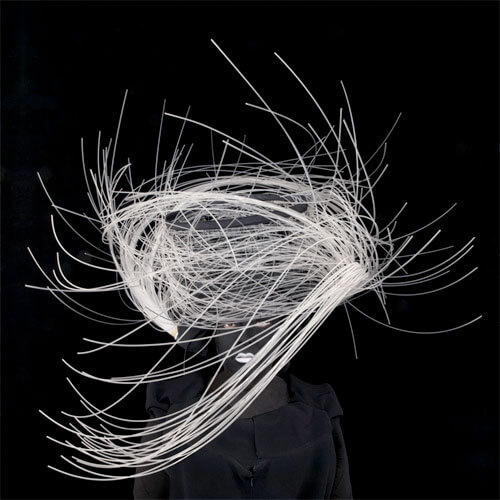Kimiko Yoshida is a Japanese visual artist who was born in 1963 and lives in Europe since 1995.
Subtle, fictional, paradoxical, Kimiko Yoshida’s Bachelor Brides form an ensemble of quasi-monochromatic self-portraits, fragments of an intimate web, elaborating on a singular story: the feminine condition in Japan. Her images are large format, luminous squares, underlining her fantasy-bio epic. While still very young, Kimiko Yoshida was struck by the story of her own mother, who met her husband for the first time on her wedding day. Kimiko Yoshida’s own story is compelling. Born in Japan, she left to France in 1995, where she adopted a new language, a new way to live, to create. She studied photography at the Ecole Nationale at Arles, later she went to
Le Fresnoy Studio at Tourcoing, France.
Kimiko Yoshida has been concentrating on this series of
intangible self-portraits which can be read as a quest for the hybridization of cultures, for the transformation of the being, and perhaps even as a deletion of identities. The metamorphosis of her own identity into a multiplicity of identifications expresses the fading of uniqueness, the
"deconstruction" of the self.
Source: Gallery 51
Kimiko Yoshida was born in Tokyo, Japan in 1963. Feeling oppressed as a woman, she left Japan in 1995 and moved to France to pursue her artistic ambitions. She studied at the École Nationale Supérieure de la Photographie in Arles and the Studio National des Arts Contemporains in "Le Fresnoy". Since gaining her artistic freedom, Yoshida has been working prolifically. Her work revolves around feminine identity and the transformative power of art. In her most recent project,
Painting. Self-Portrait she wears elaborate costumes and paints her skin in a monochrome color that matches the background. The monochromatic elements accentuate the fashion of Yoshida’s costumes.
For the artist, the costume is
"the field of diversion, detournement, and deflection." The visual elements, coupled with the titles’ reference to artists and paintings of the past (Ophelia by Delacroix, The Torero Bride with a Black Suit of Lights, Remembering Picasso), are meant to come together to challenge conventional notions and traditions of art and cultural identity.
"I want an image that tries to rethink its own meanings and references."
For her self-portraits, Yoshida received the
International Photography Award in 2005. She continues to exhibit worldwide, and her work is found in the permanent collections of the
Museum of Fine Arts of Houston, the
Israel Museum, the
Kawasaki City Museum, and the
Maison Européenne de la Photographie in Paris.
Source: Holden Luntz Photo Gallery
